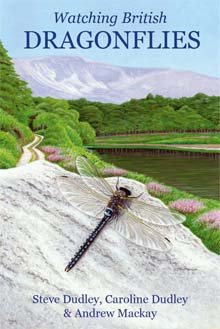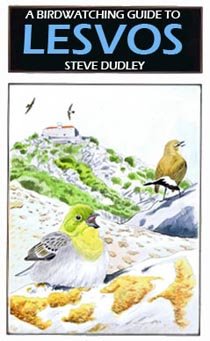SHETLAND - BIRDING
Day five of my Shetland & Orkney trip for
Speyside Wildlife with fellow guide Ray Nowicki.
Guests: Liz, Chris, Joan, June, Daphne & David , Mary & John , Margaret & Terry.
We leave the hotel at 8.30am after another hearty breakfast (despite the hotel running out of some cereals, muesli and sausages – what else would we have to complain about if it wasn’t for the hotel’s catering!). The early morning blue sky and bright sun had given way to the more expected overcast grey sky.
We head north to Kergord – Shetland's largest stand of trees. The first lot of trees are quiet but the adjacent cut grass field is alive with gulls, Curlews, Rooks, Starlings, Lapwings and Oystercatchers.
John asks Steve to check three of the ‘curlews’, and sure enough, once a scope is on them, they are clearly Whimbrel. They strut around the cut lines of grass showing off all their bits for us all to see. Terry then picks up a Woodpigeon on the opposite hillside, so once everyone has had their fill of Whimbrels, the scope is repositioned so everyone can get it on their trip list! Interest is so high in the Woodpig that only Chris notices that there are actually two of them!
We move on up to the main trees where a singing Goldcrest is eventually heard by someone other than Ray and Steve. “Crossbill!” shouts Ray. We all listen, but we can’t hear a thing over the din of the farm machinery in the field by us, the calling cockerels, the cooing doves and chirping sparrows! We are just heading back to the vans when Terry asks Steve what the bird on top of the pines is. “Crossbill!” yells Steve, “a female”. But within seconds it flies before anyone else can get to them. Damn! With a ferry to catch, we have no more time give it so reluctantly head off north to Toft.
We arrive at Toft just as the 10.00am ferry is being loaded. Unfortunately, the large lorry in front of us takes up the remaining space so we have to sit it out and wait for the 10.30 boat (we had more time for that Crossbill after all!). The break allows us to enjoy the ferry terminal facilities and we are soon getting stuck into the obligatory ferry terminal Red-throated Diver, Ringed Plovers, Dunlin, Rock Pipits and a very obliging Wren singing its head off from one of the building contractors signs.
We arrive on Yell and head straight for Sandwick to view Southladies Voe. It's nice and calm and overcast – perfect Otter weather. Scopes are soon up and we are scouring every inch of the water and shoreline. Tystie, Red-throated Diver, Shags, Redshank, Ringed Plover, gulls – all picked out, but no Otters. A Raven bounces around the hillside opposite and a Rock Dove flies past providing us with some of our best views to date. Just by the vans Steve finds a diminutive Mountain Pansy.
“Otter! Otter! Otter! Otter!” hails Ray. There on the nearby little rock skerry sits an Otter. We all just get on it as it slips in to the water. It immediately starts to fish, and within seconds appears with an eel which is soon dispatched. It keeps feeding, each dive seeming with something, usually too small to see. It gets closer and closer with each dive until its right below us – any closer and it will be under the bank!
Thankfully, it seems to have found a line to fish along, and for the next five or so minutes continuously dives and brings up fish after fish, more often than not a bright red-finned fish (wrasse?). Eventually, the inevitable happens and it drifts out of sight under the bank below us. We try to reposition ourselves higher up the road but can’t see it.
Our new position also kicks off the nearby nesting Golden Plovers to call so we retreat back to the vans where we see the Otter has moved further along the coast and is even closer to us but back in view. Each dive is preceded by a ‘snorkel’ as it looks under the water, and with a slight arch of the back, it slides under the water surface with a characteristic rise of the tail as it disappears almost vertically with a splash.
When it has caught a small fish, it appears back at the surface rather slowly, chomping as it hits the air. But when it has a larger prey item, it bobs right out of the water vertically revealing its shoulders before sitting higher in the water, sometimes rolling on to its back and lifting its paws to handle the fish as it devours it.
 Otter enjoying a fish (or a prayer?)
Otter enjoying a fish (or a prayer?)
We’ve been watching it almost continuously for about 45 minutes when a Danish car pulls up, and with a slam of a door and a loud “excuse me!” from one of the occupants, the Otter makes for open water and begins to swim away from us. It keeps fishing as it goes, and eventually reaches the far side. It moves along the rocks and then comes out of the water. Fantastic!
It jumps onto a large flat rock where it suddenly stretches out flat, cat-like, as if it’s trying to hide from something. After a few seconds it jumps back down off the rocks and begins to sniff and inspect the some of the numerous holes just above the tideline. Is it hunting for rabbits? It disappears in to the odd one only to reappear, sometimes from another hole. Eventually it slips back in to the water and continues along the shore. A Tystie and a Herring Gull soon shift when they see the approaching Otter: ‘nuff respect!’.
After a quick comfort stop at the ferry terminal, we head out to Loch of Littlester for lunch. No surprises today, as we’ve already carefully checked the contents of the hamper box before leaving the hotel (who says we Speyside guides are stupid!).
After lunch, we take an early ferry back across to the Mainland and head for the harbour lights of Lerwick, and Shetland Catch for a spot of gull watching. A first-summer Iceland Gull was reported yesterday, so it should be fun trying to pick it out among the huge numbers of gulls that hand around the fish quays and processing plants.
On arrival we indeed do find huge numbers of gulls, loafing on every rooftop, around the quays, the beaches and on the sea. We start to go through them all. Nothing on first sight. The sound between us and Bressay is teeming with auks, Kittiwakes, Fulmars, Eider and Grey Seals. There are loads of seals right in the quay area around the ships.
“Iceland Gull!” shouts ray and he directs us to the quay on Bressay on the other side of the sound. Among the Herring Gulls is a clearly all-white bird wandering around the quay. It’s difficult to watch as it often disappears behind the larger Herring Gulls and railings. But this isn’t a first-summer bird, it’s clearly a second-summer. Is it a different bird to yesterday? Was yesterday’s bird a first-summer? Most get a look at it before it flies up with the other gulls as a man approaches them. We lose it. Damn!
We spend five or so frantic minutes trying to locate it. Steve wanders off to get a different viewing angle of the opposite shore. With bins, he spots a white-winged gull land on the sea not far from where the Iceland was. He yells and waves to the others and gets acknowledgement they have seen it. He scopes the bird and is amazed to find a first-summer Glaucous Gull! Wow! He sprints to the group and announces that it’s a Glauc and not an Ice.
Confusion. Ray does a double check in his scope and smiles in agreement. “We’ve got both Iceland and Glaucous” he announces. We all get a view of this huge (female?) brute of a gull, with a huge head and large pinky bill with a black tip before it drifts out of view. No sooner has it gone than second-summer Iceland is picked up back in its original location. More on and off views before it takes flight and lands on the quay. Now that’s more like it. But it too does a disappearing act when it chooses to sit out of view behind the quay! Grrrrr!
We turn our attention to the very entertaining Grey Seals below us, bouncing in the sea below the docked ships. A guy on one of the ships starts to throw fish out to them and pandemonium reigns! Seals ‘bottle’ as they sit as high as they can in the water to catch fish being thrown to them. It’s like feeding time at the zoo! “Iceland Gull!” shouts Ray. Terry has spotted a bird right below us – metres away! And what’s more, it’s a first-summer! Its yesterday’s bird, and there really are two Icelands here (as well as the Glauc). Fantastic. We get great views of this close bird as it picks its way along the shore in front of us and out of view. Wonderful stuff.
 1st summer Iceland Gull - one of two Ices and a Glauc seen today!
1st summer Iceland Gull - one of two Ices and a Glauc seen today!
What an exciting end to the day. We climb back in to the vans jubilant with our gull-watching exploits and head back to the hotel for another entertaining evening of Shetland fare and hilarious conversation.

















